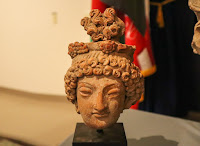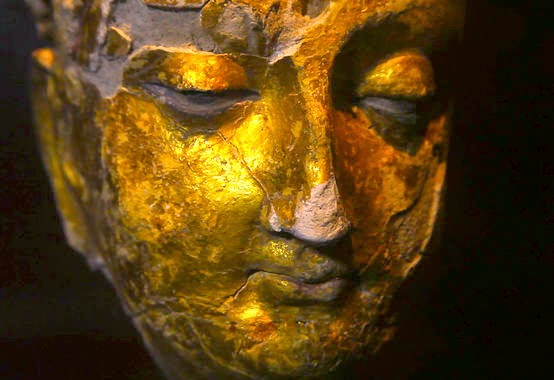Tuesday, April 20, 2021 -  Afghanistan,antiquities recovered,art restitution,art theft,Cyrus Vance Jr.,Homeland Security Investigations,Manhattan District Attorney,Matthew Bogdanos,Subhash Kapoor
Afghanistan,antiquities recovered,art restitution,art theft,Cyrus Vance Jr.,Homeland Security Investigations,Manhattan District Attorney,Matthew Bogdanos,Subhash Kapoor
 No comments
No comments
 Afghanistan,antiquities recovered,art restitution,art theft,Cyrus Vance Jr.,Homeland Security Investigations,Manhattan District Attorney,Matthew Bogdanos,Subhash Kapoor
Afghanistan,antiquities recovered,art restitution,art theft,Cyrus Vance Jr.,Homeland Security Investigations,Manhattan District Attorney,Matthew Bogdanos,Subhash Kapoor
 No comments
No comments
Restitution: Manhattan and US authorities hand over 33 artefacts stolen from the the Islamic Republic of Afghanistan
 |
| Image Credit - HSI ICE |
Afghanistan, one of the world’s poorest countries, has been plagued by war and corruption. That vulnerability has long made it a target for looters, many of whom have stripped thousands of Buddhist and Hindu antiquities, some dating back more than 1,800 years, from their find spots. But while decades of conflict have devastated the Afghanistan countryside and left its populations impoverished, its dealers like Subhash Kapoor with his tony Art of the Past gallery on Madison Avenue in New York who turned other peoples' misery and misfortune into personal profit.
Kapoor's clients turned a blind eye to the provenance of the artworks he procured, as did important museum institutions who readily purchased work through the dealer or accepted tainted donations from his well-heeled clients with regularly. As seen in the restitutions over the last month, this network involved with this single New York ancient art dealer was able to source, procure, and sell illicit material from Afghanistan, Sri Lanka, Nepal, Southeast Asia, and southern India, often in quantities of a staggering scale. But this week, thirty-three of those plundered artworks were handed over to the Islamic Republic of Afghanistan, via its first female Ambassador to the United States, Roya Rahmani. In accepting these artefacts Ambassador Rahami knowledgeably stated:
“The environment that allows for the plundering of Afghanistan’s treasured antiquities is the same environment that allows for the perpetuation of conflict...traffickers are not just robbing Afghanistan of its history, they are perpetuating a situation where peace does not manifest and the region does not stabilize. Looting Afghanistan’s past is looting Afghanistan’s future.”
 |
| Image Credit: The office of Afghan ambassador, Roya Rahmani |
During the handover ceremony, Manhattan District Attorney Cy Vance, Jr. underscored the ambassador's statements underscoring:
 |
| Image Credit: The office of Afghan ambassador, Roya Rahmani |
The 33 artefacts restituted this week were part of a hoard of 2,500 objects valued at $143 million which were seized between 2012 and 2014 as a result of the Subhash Kapoor investigation and the ongoing case being built against the dealer in the United States. Since August 2020, the Manhattan DA's office, their Antiquities Trafficking Unit and their partners at Homeland Security Investigations have successfully restituted 338 stolen objects to seven countries.
 |
| Image Credit - HSI ICE |
As we can see from the substantial number of restitutions over the last four weeks, including two artefacts to the Democratic Socialist Republic of Sri Lanka and three 13 - 16th century CE artefacts stolen from the Federal Democratic Republic of Nepal, the breadth of the problem of illicit material in liberal circulation on the legitimate ancient art market is not a minor problem, but rather something more pernicious.
Despite this, the New York success stories over the last month demonstrate what public prosecutors can do, when art crimes are given a higher priority. Allocating sufficient resources and allowing collaborative access to experts can serve to facilitate successful law enforcement investigations into criminal activity within the ancient art market which stretches over years and between jurisdictions. The result being the plundered heritage can be confiscated and returned back home in accordance with the laws of particular jurisdictions involved.












